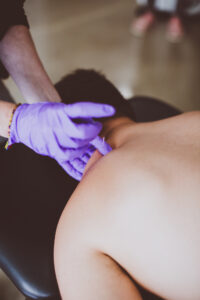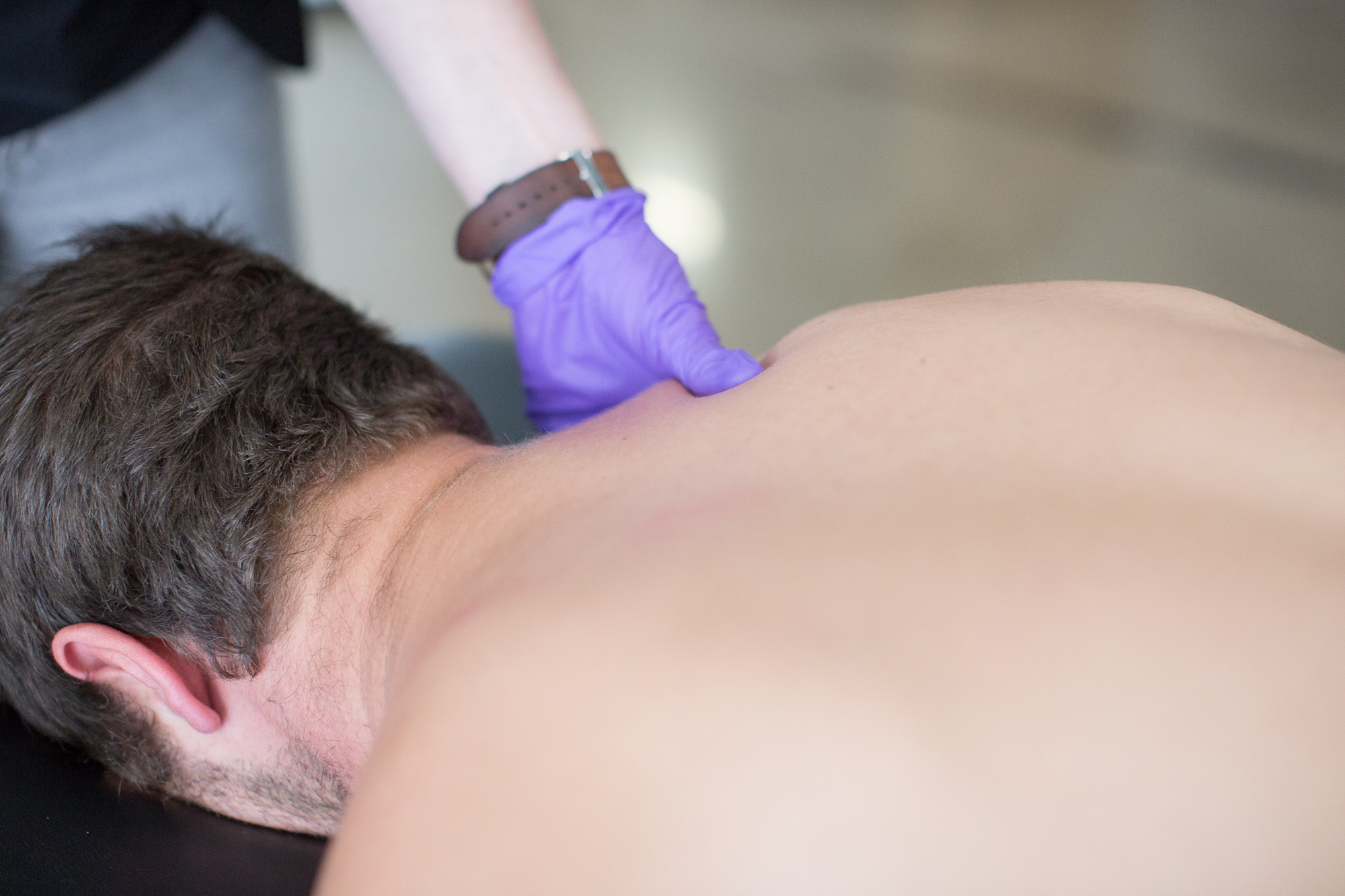By Motion Physical Therapist: Dr. Michelle Steege PT, DPT
Dry needling in physical therapy is an evidence-aligned treatment, and technique used to treat pain both chronic and acute in nature. This practice affects myofascial trigger points, pain responses, excessive muscle tension, scar tissue, fascia, and connective tissues. It is a quick technique that uses a thin filiform needle to penetrate the skin to change local symptoms.
Indicated For:
- Myofascial trigger points to decrease muscle tension and pain, in addition to normalization of movement and function.

- Pathologies that require stimulation of a local inflammatory response to promote healing in the targeted tissue, such as with tendonopathies.
- Think anything from tightness in your upper trapezius that continues to cause headaches, to athletes struggling with hamstring tendonopathy.
Dry Needling vs. Acupuncture:
Dry needling is different than acupuncture based upon the principles of use, history, and indications for use. The only similarities are use of the same type of needling and penetration of the skin. Dry needling is based on western medicine, more specifically anatomy and physiology of the musculoskeletal and nervous system. Acupuncture is based on traditional Chinese medicine and use of meridians to determine needle placement.
Dry needling is most often used as an adjunct to other physical therapy interventions (manual therapy, corrective exercise, strengthening, neuromuscular re-education) to promote long-term changes in symptoms and function. It can be a successful intervention to progress clients with more active rehabilitation techniques.
Interested about learning more and testing this technique out? Give us a call or schedule a physical therapy assessment online today to meet with our professional trained staff!
About Dr. Michelle Steege, PT, DPT:

Michelle is passionate about the profession of physical therapy, which allows her to help people return to the activities they love. Her experience in a hospital-based outpatient orthopedic setting has given her the opportunity to treat a variety of orthopedic conditions and sports injuries. Michelle began her orthopedic residency at Motion in 2017, further advancing her knowledge in the world of physical therapy. She also has training in instrument-assisted soft tissue mobilization (IASTM) and running analysis.
Michelle earned her undergraduate degree from the University of Wisconsin – Eau Claire in exercise science. She then attended the University of Texas Southwestern Medical Center in Dallas where she earned her doctorate in physical therapy.
In her free time, Michelle enjoys being outdoors—running, biking, hiking, kayaking, and spending time at the cabin in northern Wisconsin.
Works cited
- APTA Public Policy, Practice, and Professional Affairs Unit. “Description of Dry Needling In Clinical Practice: An Educational Resource Paper”. February 2013. http://www.apta.org/StateIssues/DryNeedling/
- APTA Department of Practice and APTA State Government Affairs”Physical Therapists & The Performance of Dry Needling: An Educational Resource Paper”. January 2012. http://www.apta.org/StateIssues/DryNeedling/



